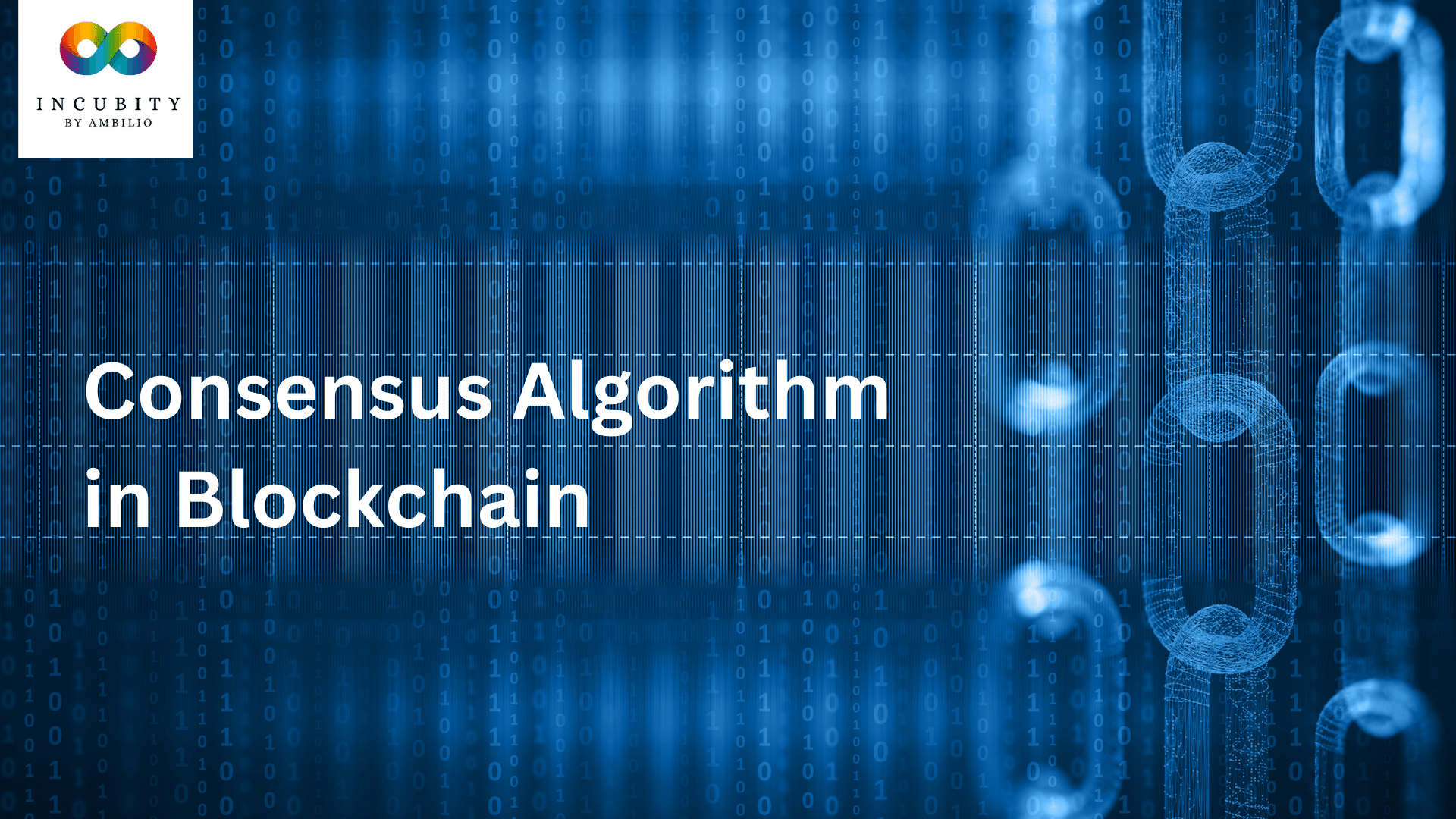Blockchain is a distributed database that allows multiple parties to access and update a ledger in a decentralized and transparent manner. Consensus algorithms are a fundamental component of blockchain technology.
A consensus algorithm is a set of rules that govern how nodes in a blockchain network agree on the state of the ledger. The goal of a consensus algorithm is to ensure that all nodes in the network have a consistent and accurate view of the ledger, even in the presence of faulty or malicious nodes. Consensus algorithms are necessary for blockchain technology because there is no central authority to manage the network and ensure that all nodes are in agreement.
Consensus is a crucial component of blockchain technology because it enables the network to function in a decentralized and secure manner. Without consensus, there would be no way for multiple parties to agree on the state of the ledger, which would make the system unreliable and vulnerable to attacks. Consensus algorithms also ensure that the network is resilient to attacks and can continue to function even in the face of adversarial behavior.
In this article, we will provide a comprehensive overview of consensus algorithms in blockchain technology. We will begin by discussing the theoretical foundations of consensus algorithms, including Byzantine Fault Tolerance and the CAP Theorem. We will then explore the different types of consensus algorithms used in blockchain technology, including Proof of Work, Proof of Stake, Delegated Proof of Stake, and Practical Byzantine Fault Tolerance. Finally, we will provide hands-on exercises to demonstrate how consensus algorithms work in practice. By the end of this article, readers will have a deep understanding of consensus algorithms in blockchain technology and how they are used in real-world applications.
Theoretical Foundations of Consensus Algorithms
Byzantine Fault Tolerance
Byzantine Fault Tolerance (BFT) is a concept that describes the ability of a distributed system to function correctly even in the presence of faulty or malicious nodes. In the context of blockchain technology, BFT is essential to ensure that the network can reach a consensus on the state of the ledger, even if some nodes are behaving adversarially. BFT is achieved through a combination of redundancy, replication, and cryptographic techniques that allow the network to detect and isolate faulty nodes.
CAP Theorem
The CAP Theorem is a fundamental concept in distributed computing that describes the trade-off between consistency, availability, and partition tolerance. In the context of blockchain technology, the CAP Theorem implies that a distributed system cannot simultaneously achieve all three properties, and must choose to prioritize one or two of them at the expense of the others. For example, a blockchain network may prioritize consistency and partition tolerance, but sacrifice availability during periods of network congestion or high demand.
There are several types of consensus algorithms used in blockchain technology, each with its own advantages and disadvantages. In the next sections, we will discuss four of the most common types of consensus algorithms.
Proof of Work Consensus Algorithm
Proof of Work (PoW) is a consensus algorithm used in many blockchain networks, including Bitcoin. PoW requires nodes, called miners, to solve a computationally intensive puzzle to validate transactions and add a new block to the blockchain. The puzzle is designed to be difficult to solve, but easy to verify once a solution has been found. This means that miners must invest a significant amount of computational power and electricity to solve the puzzle, which acts as a disincentive for malicious behavior.
Once a miner solves the puzzle, they broadcast their solution to the network, and other nodes can easily verify that the solution is correct. The miner that solves the puzzle is rewarded with a certain amount of cryptocurrency, which incentivizes miners to continue participating in the network.
There are several advantages and disadvantages of using PoW consensus algorithm:
Pros:
- PoW is a proven consensus algorithm that has been used successfully in the Bitcoin network for over a decade.
- PoW is resistant to Sybil attacks, which occur when a single malicious actor creates multiple fake identities to control the network.
- PoW has a high level of security, since it requires a significant amount of computational power to alter the state of the ledger.
Cons:
- PoW requires a significant amount of computational power and electricity, which can lead to high energy consumption and environmental concerns.
- PoW can be centralized, since the cost of mining equipment and electricity can make it difficult for individual miners to compete with large mining pools.
- PoW can lead to long confirmation times, since new blocks can only be added to the blockchain once a miner has solved the puzzle.
Several blockchain networks use PoW as their consensus algorithm, including Bitcoin, Ethereum (currently using a hybrid PoW/PoS system), and Litecoin.
To better understand how PoW works, let’s walk through a hands-on exercise of mining a block in a PoW blockchain using Python:
| import hashlib def mine(block_number, transactions, previous_hash, prefix_zeros): #Find a nonce that produces a hash with prefix zeros. prefix_str = ‘0’ * prefix_zeros nonce = 0 while True: data = str(block_number) + transactions + previous_hash + str(nonce) hash_value = hashlib.sha256(data.encode()).hexdigest() if hash_value.startswith(prefix_str): print(f”Block mined with nonce value: {nonce}”) return hash_value nonce += 1 |
This is the mine function, it looks for the hash that starts with the required number of leading zeros.
| def add_block(blockchain, transactions): #Add a new block to the blockchain. block_number = len(blockchain) previous_hash = blockchain[-1][‘hash’] if len(blockchain) > 0 else ” prefix_zeros = 2 new_block_hash = mine(block_number, transactions, previous_hash, prefix_zeros) block = {‘number’: block_number, ‘hash’: new_block_hash, ‘transactions’: transactions} blockchain.append(block) |
Here we add blocks to the blockchain. The “prefix_zeros” variable controls the complexity of the mining process.
| blockchain = [] genesis_block = {‘number’: 0, ‘hash’: ‘0’, ‘transactions’: ”} blockchain.append(genesis_block) |
We have created a blockchain and added the genesis block to it.
| transactions = ‘Alice -> Bob : 1.5 BTC’ add_block(blockchain, transactions) |
Block mined with nonce value: 763
It took the miner 763 loops to find the suitable hash that starts with two leading zeros. IBy increasing the value of the “prefix_zeros” variable within the “add_block” function, the mining process becomes more challenging and time-consuming. In this particular code, the nonce value is 1268 when the “prefix_value” is set to 3. Moreover, when the “prefix_value” is set to 4, the nonce value jumps to 47973 and continues to increase exponentially with each increment of the “prefix_value”.
Proof of Work Consensus Algorithm
Proof of Stake (PoS) is a consensus algorithm used in many modern blockchains, including Ethereum 2.0, Cardano, Polkadot, and Cosmos. Unlike Proof of Work, which requires miners to solve complex cryptographic puzzles to validate blocks, PoS uses a different mechanism to select validators to create new blocks.
In PoS, validators are selected based on the amount of cryptocurrency they have staked in the network. The more cryptocurrency a validator stakes, the greater their chances of being selected to create a new block. When a validator is selected, they receive a reward in the form of newly minted cryptocurrency, as well as transaction fees.
To ensure that validators are honest, PoS introduces a mechanism called slashing. If a validator behaves maliciously, such as by trying to create invalid blocks or double-spending, they will lose a portion of their stake. This serves as a disincentive to bad behavior, as validators have more to lose if they misbehave.
PoS has several advantages over PoW. First, it is much less energy-intensive, as it does not require complex computations to validate blocks. This makes it more environmentally friendly and cheaper to operate. Second, it is more secure against 51% attacks, as attackers would need to acquire a majority of the cryptocurrency in the network to take control. Finally, PoS allows for a more decentralized network, as more people can participate in block validation without the need for specialized hardware.
However, PoS also has some disadvantages. One potential issue is centralization, as validators with more cryptocurrency have a greater chance of being selected to validate blocks. This could lead to a concentration of power in the hands of a few large holders. Additionally, PoS is still a relatively new technology, and there may be undiscovered security vulnerabilities or other issues.
Unlike the previous section on Proof of Work, we will not be using code for the hands-on exercise in this section. The staking process in a PoS blockchain can be complex and time-consuming to implement in code, and it may be better suited for a separate article. Therefore, we will provide a codeless explanation instead.
In a Proof of Stake (PoS) blockchain, staking is the process of holding a certain amount of cryptocurrency in a wallet and using it to participate in the consensus mechanism of the blockchain. By staking, you become a validator and are eligible to create blocks and earn rewards.
To stake in a PoS blockchain, you first need to acquire the cryptocurrency used by the blockchain and store it in a compatible wallet. Then, you need to signal your intention to stake by “locking” a certain amount of the cryptocurrency in a staking contract. This contract is a smart contract that handles the staking process and rewards distribution.
Once you have locked your cryptocurrency in the staking contract, you will become a validator and can participate in the consensus mechanism of the blockchain. Validators take turns creating blocks and validating transactions and earn rewards for their work.
The amount of cryptocurrency you need to lock in the staking contract depends on the specific blockchain and staking protocol. Some blockchains require a minimum stake, while others allow any amount to be staked. The staking rewards also vary depending on the blockchain and can be either a fixed amount or a percentage of the transaction fees.
Overall, staking is an important process in PoS blockchains as it allows for a more energy-efficient and scalable consensus mechanism compared to PoW. By participating in staking, you can help secure the network and earn rewards for your contribution.
Delegated Proof of Stake Consensus Algorithm
Delegated Proof of Stake (DPoS) is a modification and improvement of the Proof of Stake (PoS) consensus algorithm. DPoS was created to address some of the limitations of PoS, particularly the issues of scalability and centralization. DPoS was first proposed in 2014 by Daniel Larimer, the founder of BitShares, and later implemented in the BitShares blockchain. Since then, DPoS has been adopted by several other blockchains, including EOS, Tron, and Lisk.
DPoS is a consensus algorithm that involves the election of a group of nodes, called block producers or witnesses, who are responsible for validating transactions and creating new blocks in the blockchain. Unlike PoS, where every node has a chance to create a block and validate transactions, DPoS relies on a small group of trusted nodes to perform these tasks.
The process of the algorithm:
- Nominating Block Producers: In a DPoS system, the community nominates and votes for a set of block producers who are responsible for validating transactions and creating new blocks. To be eligible to become a block producer, a node must stake a certain amount of cryptocurrency and be voted in by the community. The more votes a node receives, the higher its chances of becoming a block producer.
- Voting for Block Producers: Once the block producers have been nominated, the community can vote for them using their stake. Each stakeholder can vote for a certain number of block producers, and the weight of their vote depends on the amount of cryptocurrency they have staked.
- Block Production: The elected block producers take turns creating new blocks and validating transactions. Each block producer has a specific time slot during which they are responsible for creating a block.
- Rewards and Penalties: Block producers are incentivized to behave honestly and efficiently by receiving rewards in the form of cryptocurrency. However, if a block producer fails to perform its duties or behaves maliciously, it can be penalized by losing its block-producing privileges and having its stake confiscated.
While DPoS has the same disadvantages as PoS, it provides an improvement of it. The improvement can be found in:
- Scalability: DPoS is more scalable than PoS because it only requires a small group of block producers to validate transactions and create new blocks.
- Efficiency: DPoS is more efficient than PoS because it avoids the need for every node to validate transactions and create blocks, which can be resource-intensive.
Practical Byzantine Fault Tolerance Consensus Algorithm
Practical Byzantine Fault Tolerance (PBFT) is a consensus algorithm that was developed by Barbara Liskov and Miguel Castro in 1999. PBFT is designed to work in a distributed network environment where a group of nodes can agree on a transaction even if some nodes are faulty or malicious.
The PBFT consensus algorithm works by having a group of nodes, also known as replicas, process a transaction and come to a consensus on the order in which the transaction is added to the blockchain. The consensus process in PBFT is divided into several stages:
- Request: The client sends a transaction request to all replicas.
- Pre-prepare: The replicas validate the transaction request, create a block, and send it to all other replicas.
- Prepare: The replicas receive the block, validate it, and send a signed message to all other replicas indicating that they have validated the block.
- Commit: The replicas receive the signed messages, validate them, and send a signed message to all other replicas indicating that they have committed the block.
- Reply: The client receives the signed message from the replicas indicating that the transaction has been processed and added to the blockchain.
At the end of the consensus process, all replicas should have the same copy of the blockchain.
One of the major advantages of the PBFT consensus algorithm is that it is highly fault-tolerant. This means that even if a few nodes in the network are faulty or malicious, the system can still reach consensus on transactions. PBFT is also fast and efficient, allowing for high transaction throughput.
However, there are also some drawbacks to using PBFT. One of the main concerns is that it requires a fixed number of nodes to operate correctly, which can make the system less flexible and more vulnerable to attacks if a node is compromised. Additionally, PBFT can be computationally intensive, which can make it difficult to scale to larger networks.
PBFT is used in several permissioned blockchain platforms, including Hyperledger Fabric, Ripple, and Stellar.
Unfortunately, it is not practical to provide a hands-on exercise for PBFT as it is a complex algorithm that requires a significant amount of infrastructure to implement. However, interested readers can explore Hyperledger Fabric, which uses PBFT as its consensus algorithm, to gain a deeper understanding of how it works.
Final Words
The consensus algorithm used in a blockchain has significant implications for its security, scalability, and energy efficiency. PoW is known for its high energy consumption, while PoS and DPoS are generally considered more energy-efficient. However, PoW has also been shown to be more resistant to attacks, while PoS and DPoS are more vulnerable to “nothing at stake” attacks.
Consensus algorithms are a critical component of blockchain technology, and ongoing research is being conducted to improve their scalability, security, and energy efficiency. There is also a growing interest in developing consensus algorithms that are more suited to specific use cases, such as decentralized finance (DeFi) applications or Internet of Things (IoT) networks.
As the blockchain ecosystem continues to evolve, new consensus algorithms will likely emerge, and existing ones will be refined to meet the growing demand for decentralized and secure systems.







